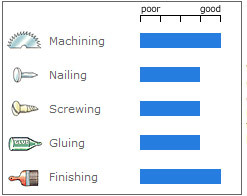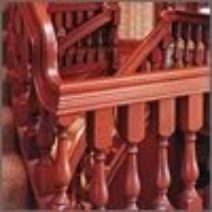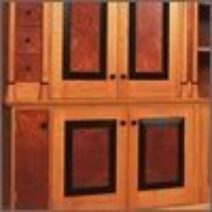
Cherry
American Cherry (Prunus Serotina)
Distribution
Throughout Eastern USA. Main commercial areas Pennsylvania, Virginia, West Virginia and New York States.
General Description
The heartwood of cherry varies from rich red to reddish brown and will darken on exposure to light. In contrast the sapwood is creamy white. The wood has a fine uniform straight grain, smooth texture, and may naturally contain brown pith flecks and small gum pockets.

Working Properties
Cherry is easy to machine, nails and glues well and when sanded, stained and polished, it produces an excellent smooth finish. It dries fairly quickly with moderately large shrinkage, but is dimensionally stable after kilning.
Physical Properties
The wood is of medium density with good wood bending properties, it has low stiffness and medium strength and shock resistance.
- Specific Gravity: 0.50 (12% M.C.)
- Average Weight: 561 kg/m3 (12% M.C.)
- Average Volumetric Shrinkage: 9.2% (Green to 6% M.C.)
- Modulus of Elasticity: 10,274 MPa
- Hardness: 4226 N
Durability
Rated as resistant to heartwood decay. The sapwood is liable to attack by common furniture beetle, and the heartwood moderately resistant to preservative treatment.
Availability
USA: Regionally available.
Export: Widely available in a full range of specifications and grades as both lumber and veneer.
Main Uses
Furniture and cabinet making, high class joinery, kitchen cabinets, moldings, paneling, flooring, doors, boat interiors, musical instruments, turning and carving.




